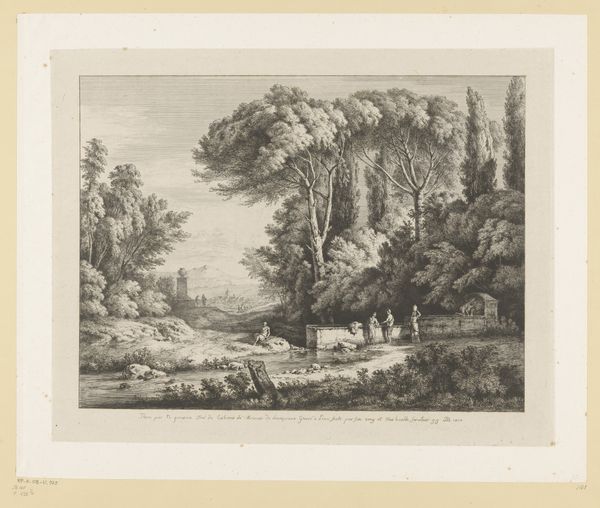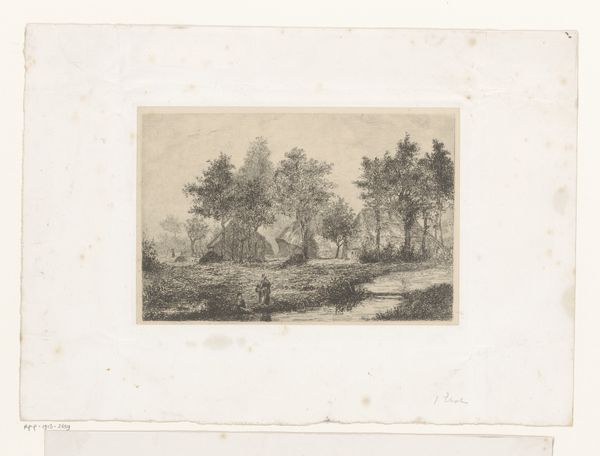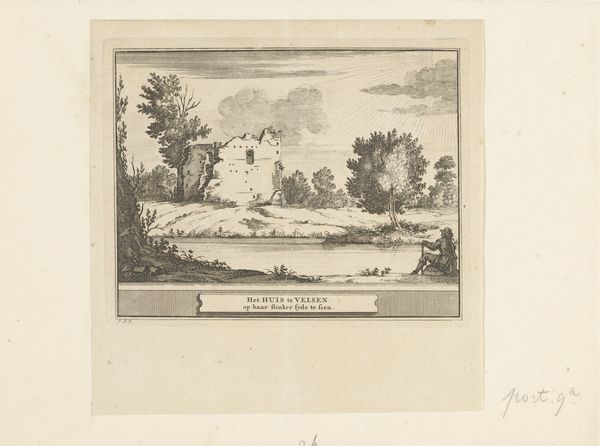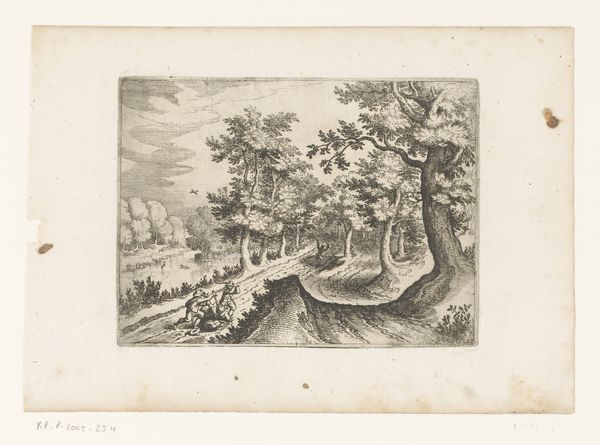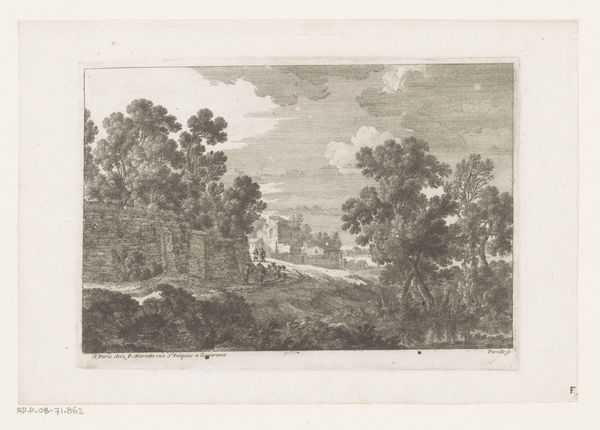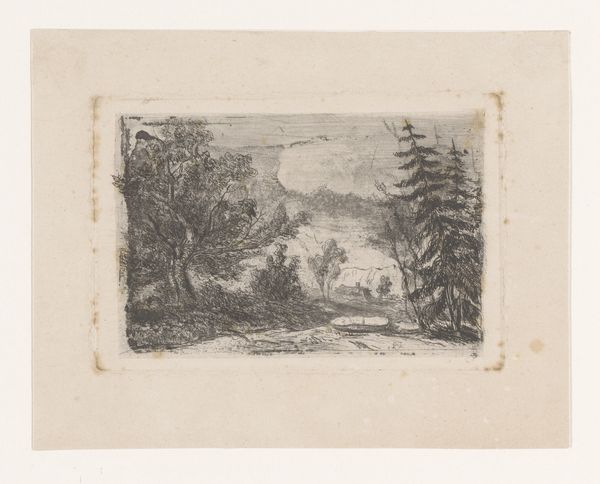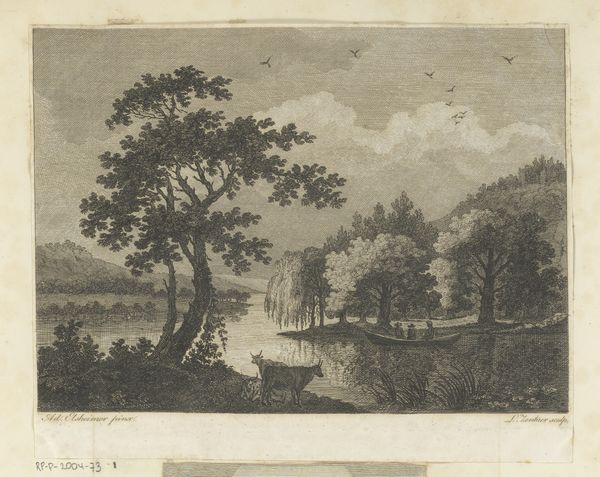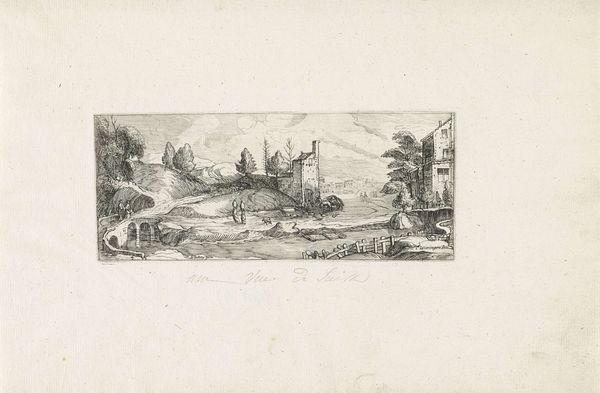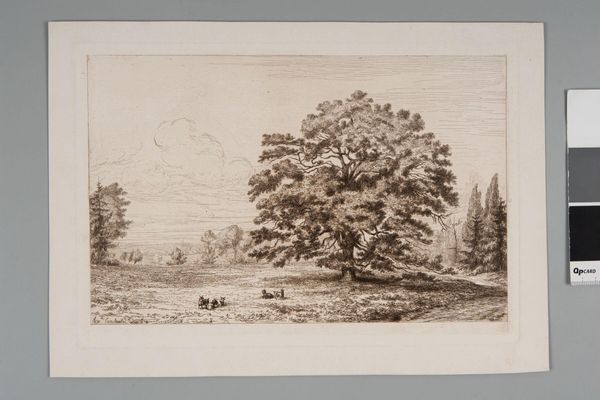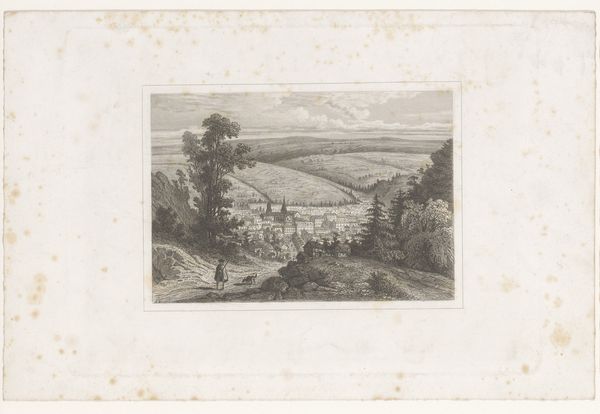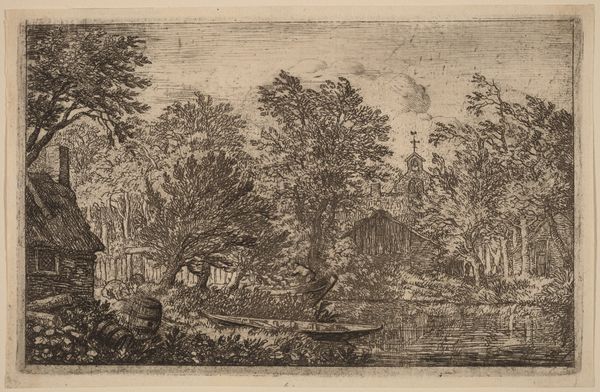
Illustration til "Katekismus for alle mennesker" 1742 - 1809
0:00
0:00
print, etching, engraving
# print
#
etching
#
landscape
#
etching
#
engraving
Dimensions: 50 mm (height) x 61 mm (width) (plademaal)
Curator: Today, we’re looking at an etching titled "Illustration til 'Katekismus for alle mennesker'," made sometime between 1742 and 1809. Editor: It's a scene of serene tranquility. Despite the limited range of tones, the composition breathes – the cottage perched above a flowing river and beyond the horizon evokes this sense of a safe haven, something solid. Curator: The artist, Johann Gottlieb Friedrich, clearly used a delicate touch. Prints such as this one offered an easily reproducible means of conveying messages – often reinforcing specific social and political ideals. Given its creation during the late Enlightenment era, I think this illustration might allude to the perceived purity of simple life versus city corruption, a theme frequently echoed in Enlightenment thought and propagated across visual media of the day. Editor: I agree, there’s definitely a pull toward an unspoiled natural ideal here. I'm particularly struck by the bridge; bridges, in iconography, can represent transitions, pathways between different states. Here, it guides us to this secluded house—what meanings do you extract from it being part of this "Catechism?" Curator: That's a fascinating point! Consider the catechism's function: instructing people within certain principles. By framing it this way, this illustration presents a path of 'righteous living' that could only exist within an insulated domestic setting far away from the public sphere, implying perhaps, the social turmoil in cities. It invites analysis into questions of access to that kind of sheltered space, a stark contrast that many historical texts would exclude in their social narrative. Editor: I find it incredibly poetic that the artist uses natural imagery to address dogma. The mountains are representative of steadfastness and permanence, a common association. Combined with the water, suggesting life, movement and purification, it becomes this beautiful synthesis. It creates the narrative of the divine expressed through nature, perhaps reflecting then-emerging schools of natural theology that seek divine law in natural structures. Curator: You’ve given me a lot to consider here. Thank you! Editor: It’s been enlightening exploring Friedrich's etching with you; such simple lines reveal layers of intricate ideas.
Comments
No comments
Be the first to comment and join the conversation on the ultimate creative platform.
